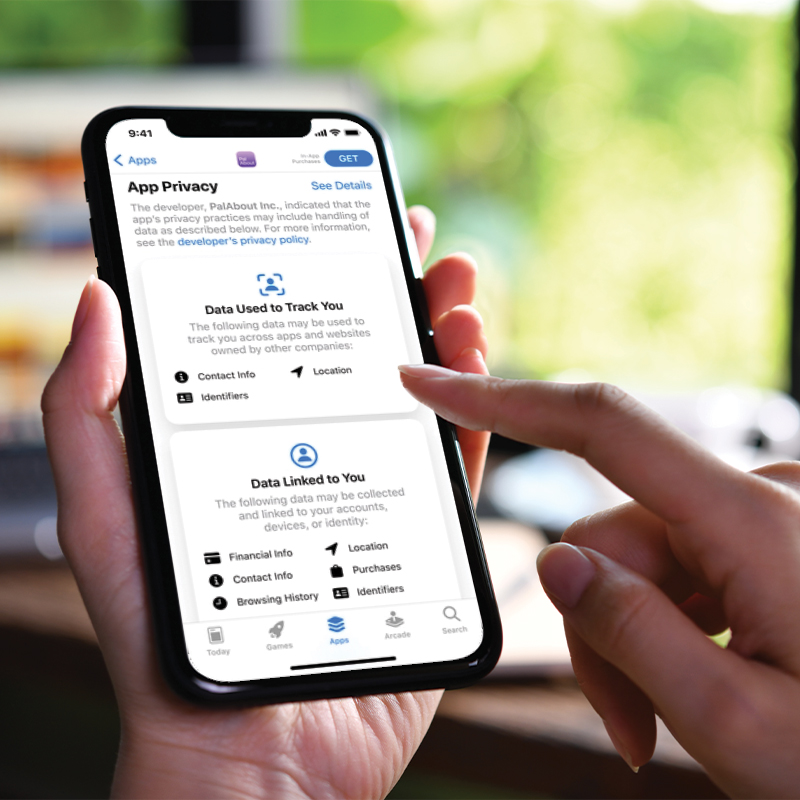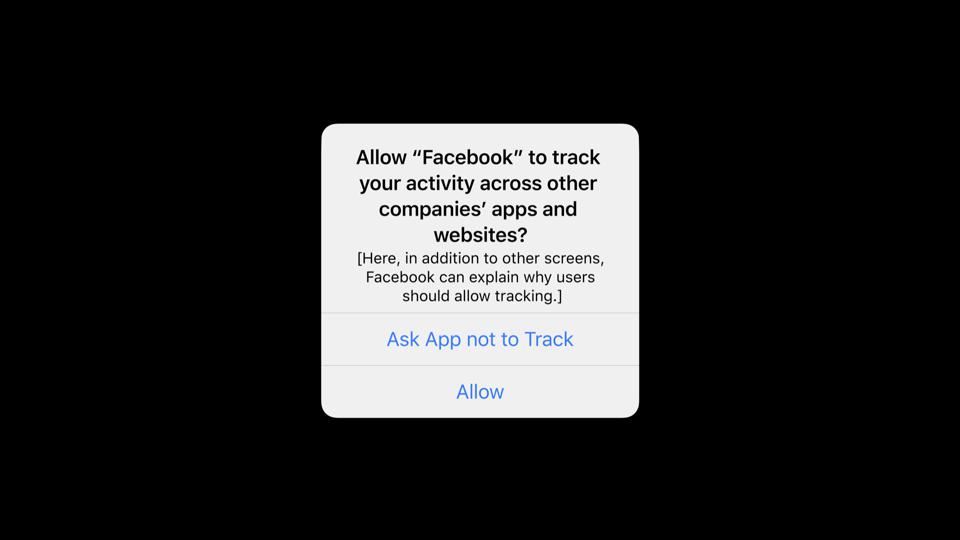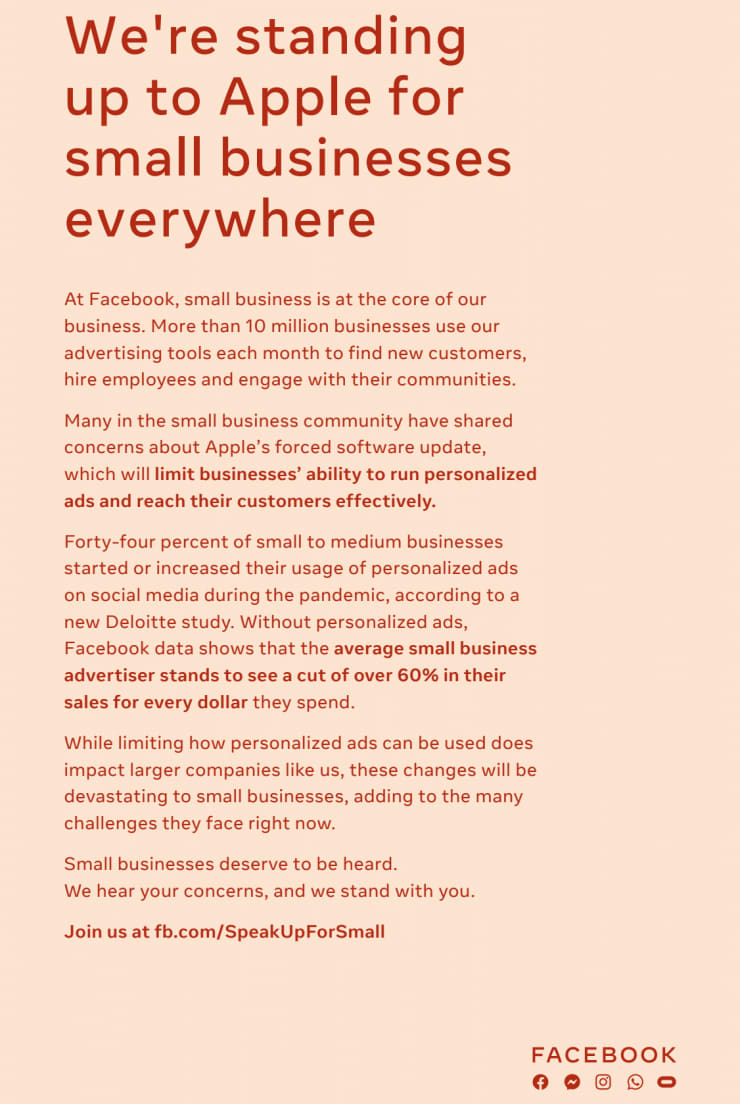Welcome to our Decoding Digital series, where we take complex digital marketing topics and make them easy to understand! Today we’re talking about Facebook vs. Apple.
So much for a slow start to 2021! ICYMI: Facebook and Apple have been fighting for years over contrasting business models that boil down to data privacy and consumer accessibility. Both Mark Zuckerberg and Tim Cook have been taking shots at each other’s companies for years in the form of subtweets, name-dropping interviews, and the latest – full-page newspaper ads.
This year, it looks like the arguments will finally come to a head as Apple plans to roll out privacy updates in the coming months that will affect how advertising is done on Facebook for the foreseeable future. So what does it all mean? Let’s break it down.
What is happening: the background
Facebook and Apple are currently in a dispute over contrasting business models and consumer privacy. What are their business models? Glad you asked:
Facebook offers free (ad-supported) social media platforms that are accessible to all.
Apple sells hardware at a high price point, with an emphasis on user control and privacy.
And where do they each stand on consumer privacy?
Facebook uses consumer information and tracking to best target ads on their platforms.
Apple emphasizes privacy and user control on their devices and does not collect data for ads.
Each side has formulated a passionate argument:
Facebook wants to keep their apps free for customers in order to stay accessible to anybody, (all income levels) and gain revenue from advertisers. By using customer information to target ads, they believe they’re protecting small businesses who rely on the platform to reach their market of potential/existing customers.
Apple believes that users should have control over which apps collect their data and how that data can be used, so they do not use consumer information to target ads. Their revenue comes from the high price points of their ever-extending product lines.
Latest developments
Apple’s iOS 14 Update
The feud finally came to a head when Apple announced at its 2020 Apple Worldwide Developers Conference last summer (June 22-26) that their next software update, iOS 14, would give Apple users the option to decline app ad tracking.
This means that when a user opens an app, a pop-up will appear (mock-up below) asking if they want to be tracked by the app, with an option to decline.
If an Apple user selects “Ask App Not to Track,” this does NOT mean that they will no longer receive ads. The consumer will still see ads on their various platforms; however, those platforms will not be able to use the Apple consumer’s data to target those ads based on their behavior. The result is that the Apple consumer will see random ads instead of targeted ads.
iOS 14 was released in fall 2020, but these app permission features were not included in it, to give app developers more time to comply with these changes. It’s now slated to be included in an updated version of iOS 14, to be released in “early 2021” – with no specific date given.
App Development and Privacy
Although the in-app pop-up updates haven’t been released yet, Apple did start requiring more transparency from app developers. They must now disclose all of their privacy practices and the types of data they collect when they submit a new app, or an app update, to the App Store.
On December 14th, this information became available to the public: (App Store example below)
Apple says it will not remove apps from the App Store if they don’t include this privacy information, but it’s no longer allowing apps to update until their privacy information is listed.
(For what it’s worth, Google is complying, and should include these privacy labels on their apps as soon as this week.)
Facebook’s Response
Two days after this new App Store update, on December 16th, Facebook ran full-page ads in the New York Times, Wall Street Journal, and Washington Post that reiterated their objection to the future updates, specifically stating that they were “standing up to Apple”.
They have since launched Speak Up for Small – a digital outlet where small business owners “can speak their mind” about the update and their concerns.
How could this impact your advertising efforts?
Once this update is rolled out, it will more than likely affect every organization’s ad performance. It’s impossible to know specifics until the update is released, but this update could cause a decline in the number of consumers that ads reach, which in turn could cause a decline in the amount of engagement the ads get. Every organization should be prepared for a decline in performance all-around once the update is released.
As far as crafting the ads, however, there shouldn’t be any change. Ads will still be created on the platforms themselves (e.g. Facebook, Google), and there shouldn’t be any changes in terms of formatting or targeting ads to consumers.
What can you do to combat it?
Unfortunately, there’s nothing we can do about the update rolling out. And since there’s no specific date that it will be released, advertisers are left to play the waiting game. However, there are some measures we can take to deal with the update in stride:
Evaluate Customer Data
If available, evaluate consumer data to determine how many customers are Apple device owners. This allows us to start estimating what a decline may look like and be able to anticipate it, rather than being blindsided by dropping numbers.
For example, if 25% of your clientele are iPhone owners, it’s safe to assume that up to 25% of those customers will opt-out of seeing ads; therefore, we could expect drop-off of up to 25% in your engagement metrics.
Evaluate Ad Targeting
Post-update roll-out, organizations can assess customer demographics and decide if it’s worth excluding Apple devices from their ad targeting altogether once the update is released. There, of course, are pros and cons to this:
Pro: By excluding Apple users, you can be 100% assured that you’re reaching your target audiences on Samsung, Google Chrome, and other non-Apple browsers/devices that fall into your target demographics.
Con: Your audience sizes would be smaller, and you’d be excluding a potentially large chunk of customers. Maybe not all Apple users will decline seeing targeted ads, and you would be excluding those that remain opted-in from seeing your ads.
Evaluate Ad Budgets
This is something that can only be evaluated post-update roll-out, but once the new iOS 14 update is released, it will be important to closely monitor digital campaign performance. If ads are reaching a significantly lower amount of people, it might be worth shifting ad dollars to other marketing efforts.
At their best, both Facebook and Apple are working to put their customers first – but are going at it in very different ways. As Apple prioritizes privacy and Facebook stands up for small businesses, only time will tell how the iOS roll-out will affect advertising dollars.
At Rosenberg, we’re up for the challenge! We’ve been in the biz for 40 years, so trust us when we say that we’ve seen some CRAZY changes in the marketing world. (Oh you know, like the invention of the Internet. NBD.) They say the only constant is change, and that is especially true in the world of digital marketing. So we plan to take these changes in stride while being ready to evaluate and fine-tune our strategies to keep driving the best results possible!







